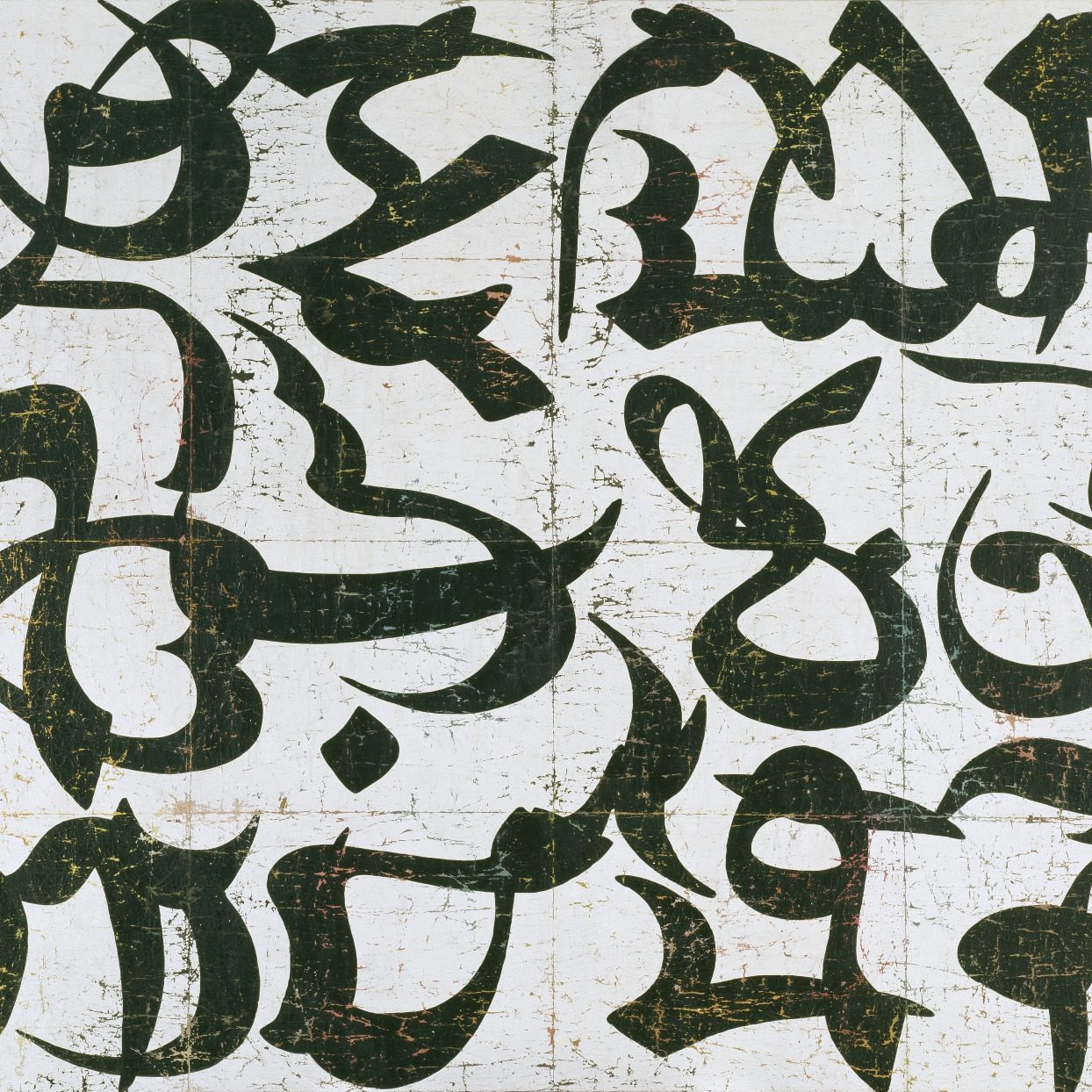
S4M53 (Primary Title)
Farhad Moshiri, Iranian, 1963–2024 (Artist)
“Ambiguity is the strongest weapon artists have at their disposal. You can play with the layers of interpretation and avoid getting into trouble.” —Farhad Moshiri
After studying in the United States in the 1980s, Farhad Moshiri returned to his native Iran, where, like many post-revolutionary artists, he makes works that address the junctures between divergent cultures while refraining from direct political critique. S4M53 derives its title and subject from a coded numeric writing system called Abjad, used to transcribe, in condensed form, long Islamic religious texts. Here a sample of such code is greatly enlarged and repeated in several directions, creating a deliberate cultural hybrid: a merging of monumental Islamic calligraphy with Western abstraction. Moshiri finished the painting by folding and crushing the canvas to create a network of cracks, revealing multiple sublayers, including rich areas of color. The work’s weathered surface and network of crackled lines convey a sense of time’s ravages on ancient material, an indirect commentary on the tensions between tradition and modernity in contemporary Iran.
[1] Accessioned November 18, 2004. See VMFA Curatorial file.
Some object records are not complete and do not reflect VMFA's full and current knowledge. VMFA makes routine updates as records are reviewed and enhanced.

